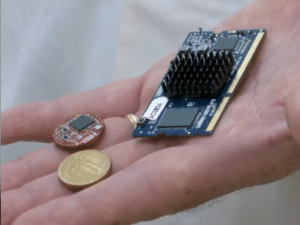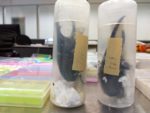The University of São Paulo (USP) developed a microcomputer, the size of a coin, called “flea”.
Despite not yet being used on a large scale, professors at the University believe that the technology will soon be available. Helping connect machines and people.
“These are computers the size of a Metro ticket, or, in some cases, computers the size of a ten cent coin”, explained Professor Marcelo Zuffo, from the Interdisciplinary Center for Interactive Technologies (CITI).

The microcomputer was named “flea”.
“Man's best companion is the dog, and we believe that the computer will follow suit. Today there is a worldwide movement called 'internet of things', and computers have to be very small because you are going to put them in your earring, in your shoes, in your shirt button. We are in a very big effort of engineering design, using what we call microelectronics, so that these computers have the granularity of dust”, said Professor Zuffo.
For the time being, these microcomputers are not used on a large scale, but they are already being tested by some of the university's partner companies.
USP pioneer in technologies
The Polytechnic School of the University of São Paulo is one of the innovators and pioneers in the field of computer development. In the past, he was responsible for creating one of the first machines in Brazil, the “Patinho Feio”. Considered the first Brazilian microcomputer.
In the 1980s, when it was developed, there was a kind of technological dispute between USP and Unicamp, which at the time was also developing a computer.
“They said that the computer they were going to build was called 'White Swan'. Then, we took the cue and said: 'look, we already have one ready and it's called 'Ugly Duckling' which one day will turn into a white swan'. And that's how the name came about. It is an arithmetic logic unit, which does the math and logical operations. And the programs and data are stored in a memory”, said Edith Ranzini, engineer and professor at Poli-USP.


